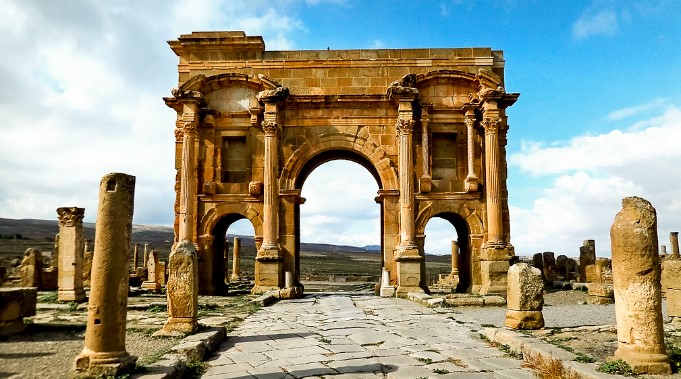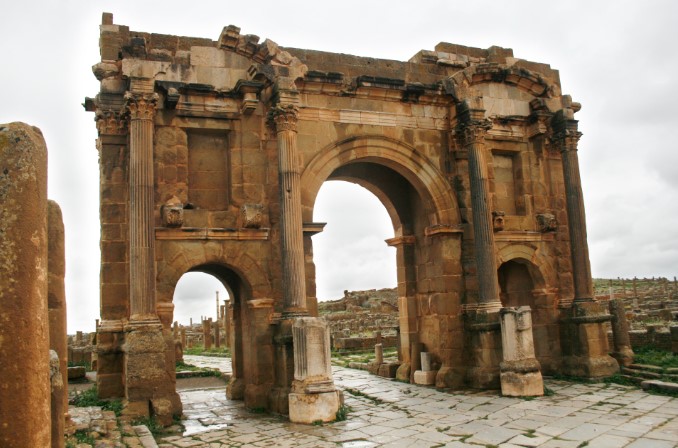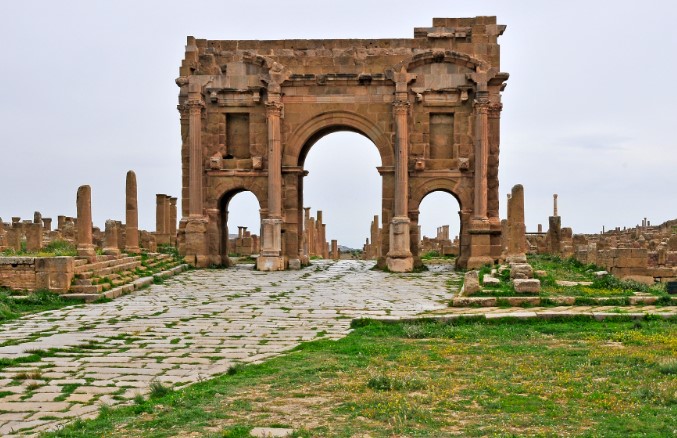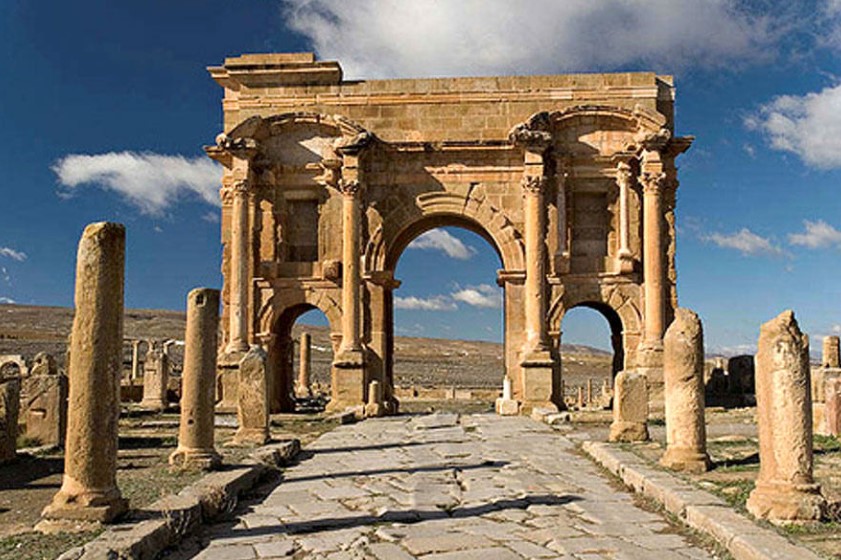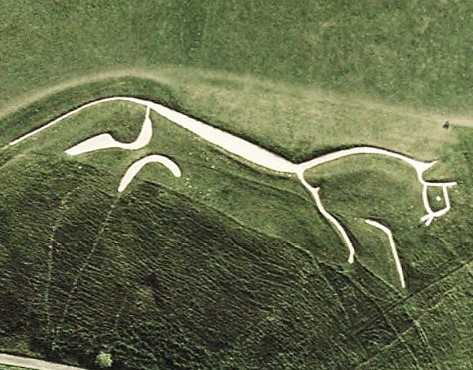There is a Roman triumphal arch known as the Arch of Trajan which is located in Timgad (ancient Thamugadi), near Batna in Algeria. It was constructed between the late 2nd century and the early 3rd century. This is 12-meter high arch was incorporated with a 6-meter high in the center which allowed vehicles to pass through under the arch that had left deep ruts in the ground under the archway. It was intended that pedestrians could use the lateral arches, which were all 3.75 meters high. The arch was designed by Apollodorus of Damascus, a Roman, Greek Syrian architect. It is made from marble quarried on Marmara Island.
At the beginning of Decumanus Maximus and the end of the road from Lambaesis, three vaulted arches formed the western gate of the city. Trajan founded the colony in the year 100, according to the inscription in the attic. The decorative fabric of the monument is characterized by curvilinear pediments that form protruding lateral aediculae that are strongly contrasted with each other. All of these factors, as well as the lavish decoration of the architectural elements, point to a later date. UNESCO has listed the Arch of Trajan and the entire archaeological site of Timgad as a World Heritage Site of heritage since 1982.
Aediculae flank the lateral arches on both sides, with smooth-stemmed Corinthian columns of colored marble placed on shelves above the niches. Both niches are flanked by deep rectangular niches. It is believed that these niches were designed to hold statues, but they have since been lost. A red Corinthian column was mounted on a pedestal, and attached to the walls, in order to frame the whole assemblage of each lateral arch and niche within the niche. A curvilinear pediment rests on top of the entablature that runs along the wall above the lateral arches, which in turn is supported by the entablature that runs along the wall. A group of monumental statues must have been erected in the attic to cover the entire surface.
In the later years of the arch’s history, other sculptures were added to it. On the occasion of his election as flamen-for-life of the colony under Emperor Septimius Severus, Lucius Licinius Optatianus erected several statues to honor the god Mars and Concordia during the reign of Emperor Septimius Severus. A similar name arch can be found in Benevento, southern Italy. This monument was built across the Via Appia, where it enters the city, in honor of Emperor Trajan.
